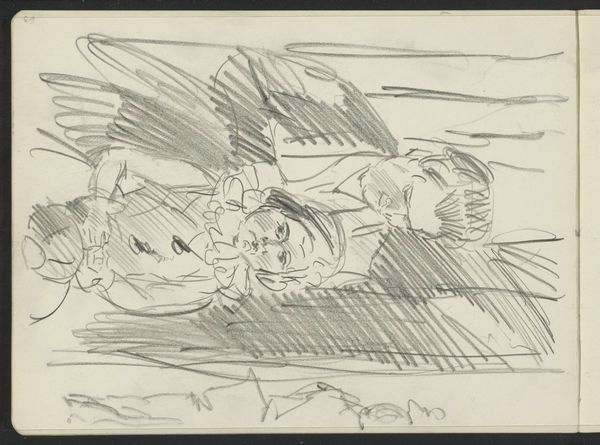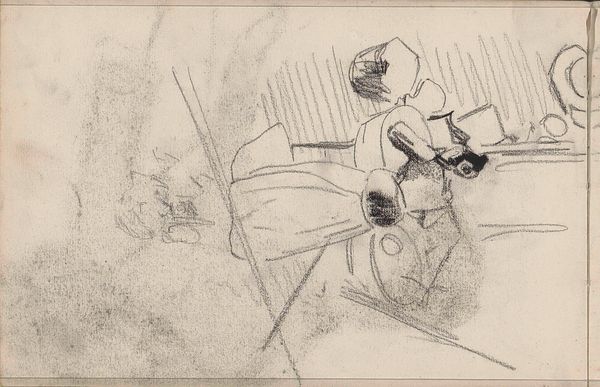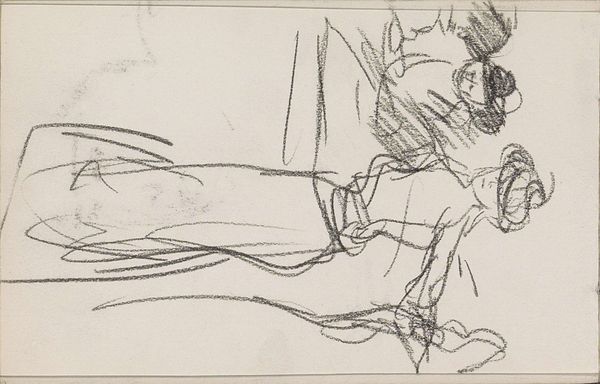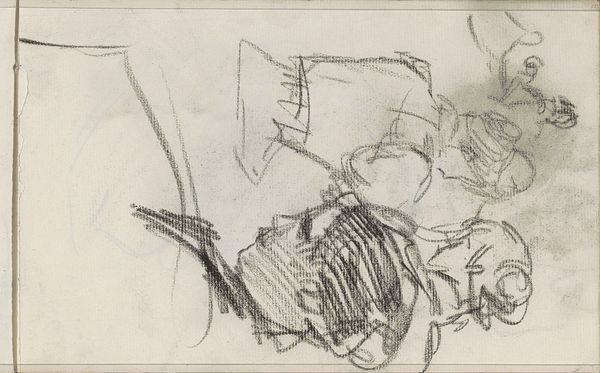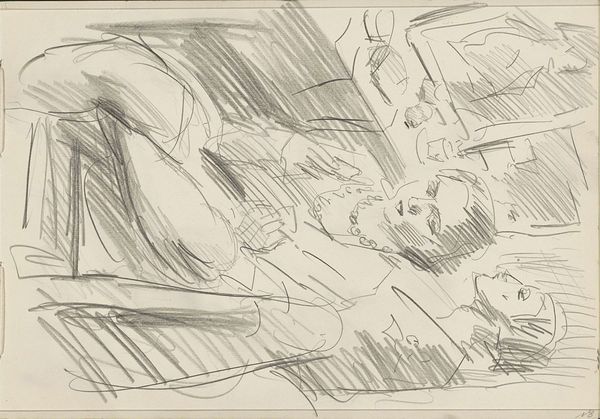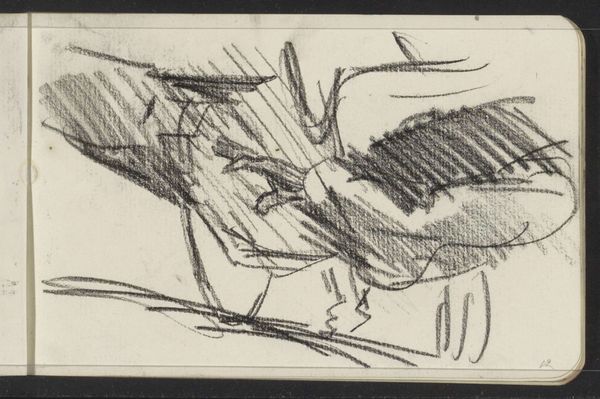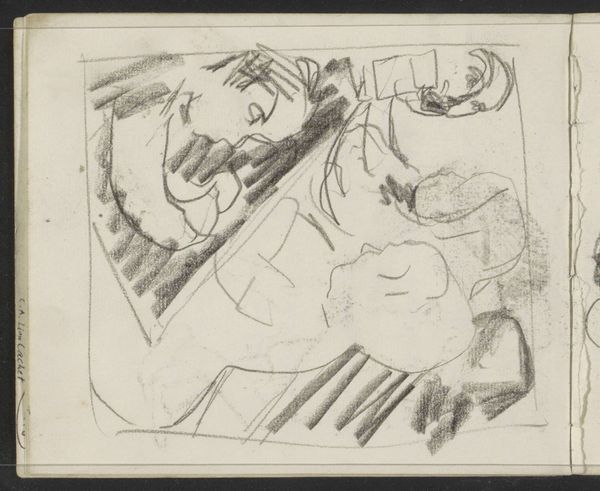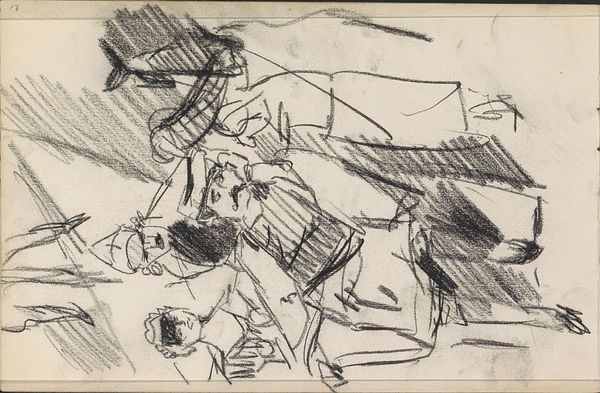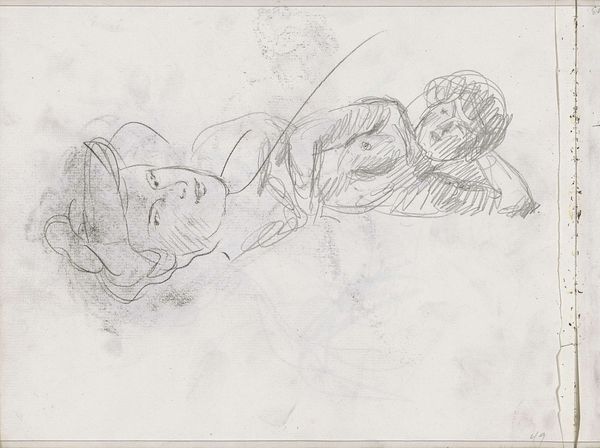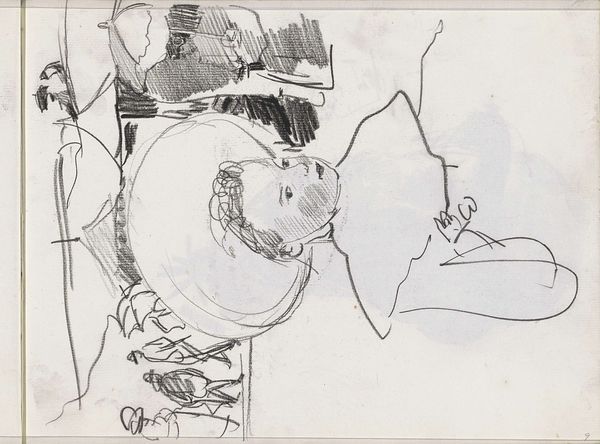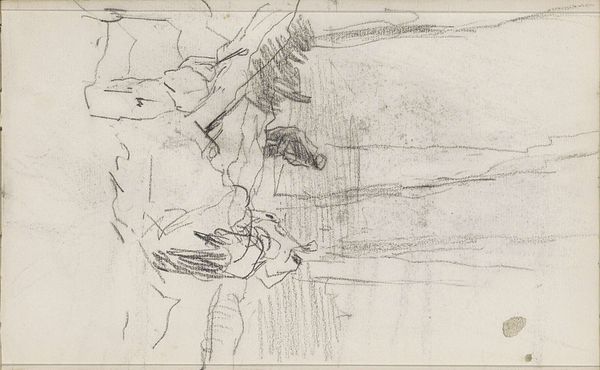
Interieur met zittende vrouwen, mogelijk koffiepiksters c. 1886 - 1903
0:00
0:00
isaacisraels
Rijksmuseum
Copyright: Rijks Museum: Open Domain
Curator: Isaac Israels made this drawing, "Interieur met zittende vrouwen, mogelijk koffiepiksters" sometime between 1886 and 1903, and it's now housed right here in the Rijksmuseum. Editor: It strikes me as incredibly intimate—almost voyeuristic. You get a real sense of candid observation, seeing these figures captured so spontaneously with what looks like charcoal on paper. Curator: The choice of medium certainly supports that impression. It is likely charcoal, perhaps even a pen and ink, which allowed for quick, iterative marks, suited to capturing fleeting moments. Note the density of the lines; the artist builds form through layers of hatching. Editor: Right, there's this beautiful roughness to the execution, but when situated socially and historically it gives me pause. The suggested title names them as "possibly coffee pickers," drawing immediate connections to labor, to colonial exploitation, and issues of gender and class. What kind of access did Israels really have to these women? How does his gaze shape our view of their work and lives? Curator: Those are pertinent questions. We need to look into Israels' context. As an artist associated with the Amsterdam Impressionism movement, his focus often lay in portraying everyday life, but often life centered in bourgeois social circles. Was he documenting the coffee production process as industry, or was it instead primarily focused on representing the picturesque elements of laborers, as so frequently happened in orientalist painting? What did commissioning or collecting such images signify during that time period? Editor: Exactly! Were these women even compensated for their representation? Did they have any say in how they were depicted, or control over the artwork that emerged? We can admire the formal qualities while simultaneously challenging the power dynamics embedded in the very act of its creation. Curator: Precisely, recognizing the work itself as material—a tangible object born from a specific historical moment. This piece of artwork has to be analyzed regarding Israels' studio practice. It’s a springboard, maybe part of his preparation for larger canvases, or merely a study in form and light. The economical usage of line, along with chiaroscuro of shadows, also underscores his engagement with materials at his disposal. Editor: Yes, those sorts of insights bring forth nuanced stories—challenging the supposed neutrality of artistic observation to unveil a layered story around art, labor, and representation. Curator: A great reminder of how crucial that socio-historical understanding remains to truly appreciating such a complex creation. Editor: Absolutely! By considering those dynamics, we’re actually deepening our understanding of what is presented here on the surface.
Comments
No comments
Be the first to comment and join the conversation on the ultimate creative platform.
